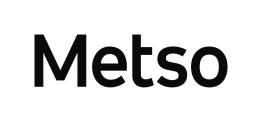Modelling service
With hundreds of operational variables to consider, all of which have an impact on the profitability (or loss) of a quarry operation, creating the best extraction system can be a complicated process. When other business factors are added in, eg customer requirements, profitability targets and investment budgets, it is not surprising that some quarries are designed in a less than perfect way.
However, a quarry modelling service is now available that can help design the optimal solution. Sandvik Mining and Construction have combined modern computing power with their wealth of quarrying experience to create an analysis service that uses a new simulation tool called SimQuarry.
SimQuarry has been built using 20 years of research data from real quarries around the world. The information has been gathered by Sandvik’s experts in drilling, crushing, breaking, conveying and tool choice, but does not focus solely on the areas of the quarry operation where Sandvik’s own product range dominates. Instead SimQuarry takes a holistic approach, analysing the various stages from beginning to end and allowing experts in the field create a more efficient supply chain throughout the entire operation.
By analyzing the process from the rock face to the finished product, SimQuarry is able to identify production bottlenecks. With over 100 variables available, the software can identify the true cost of drilling, blasting, breaking, loading and hauling. This data, which is generally not easy to extract from a profit and loss account, is invaluable in identifying where money is being spent. Even easily overlooked aspects such as landscaping, safety, management and control can be factored into the analysis.
Although SimQuarry can process the information almost in real time, the quality of the results generated is dependant on the quality of the inputted data. This can take a Sandvik representative several days and is dependant on the co-operation and participation of the quarry’s management. Amassing the data (mapping the site, machines types, haul lengths, gradient, fragmentation sizes etc) is an arduous process but vital if the resulting information is to be truly useful, but even then it only produces the picture of how the quarry is currently operating, not how it could operate.
Whether the point of the process is to improve the current situation or conceive how it could look, by understanding the quarry as a single system, it is possible to identify the critical points of the process that need optimizing, and the non-critical areas that can be sub-optimized. The program can even calculate the size of the expected cost savings.
The service not only offers a blueprint for a better layout of the site, it also examines cost savings of a more environmental nature, such as reducing fuel cost by having shorter haul distances, or reducing waste material by correct fragmentation through improved drilling and blasting systems. Much depends on the customer’s specific requirements; is maximum production the aim or lowest cost? The outcome also depends on what resources the quarry has to make improvements.
When all the information has been inputted and the customer’s priorities have been factored in, the program helps to determine any weak areas in the production chain, prompting questions such as: are all existing machines best suited to the task? It is often the case that several machine types and sizes can do the job, but which are the best ones? Choosing sub-optimal equipment can mean the difference between profit and loss.
With the customer’s mindset moving from initial costs to equipment and quarry/mine lifetime costs, the ability to accurately map out present and future costs will increasingly be seen as a business imperative.



